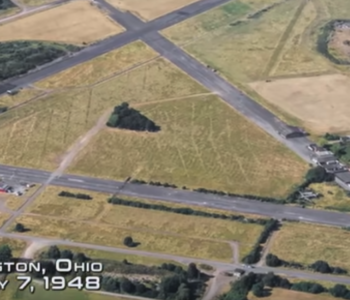
John Bryan State Park
I mentioned on Facebook this week that I stopped over at John Bryan state park at lunch to make some calls, and wanted to share how great of a park it is! I also mentioned that they are doing improvements to the park grounds, adding new camping spots, upgrading the camp store, and adding new things like a disc golf course there too! As much as I like the park, I’ve not even been down to the river edge, and that is supposed to be cool too.
At the park store, the fellow on duty gave me a park history paper that obviously had been copied from copies. So as a courtesy, I’ve retyped it for others to read about. Hopefully I proofed it good! I did ad some more punctuation. :^)
John Bryan State Park History & Description
Some of the first people to experience the area’s beauty were the mound builders, and later, the Shawnee indians. Just five miles south of Yellow Springs, approximately where the town of Oldtown is now, was the site of Old Chillocothe, one of the leading Shawnee settlements in Ohio. The great Shawnee warrior, Tecumseh, was a frequent visitor here and to the nearby James Galloway House, which has been kept intact by the Greene County Historical Society.
This portion of the Little Miami river was a vital, economical source of power fro the early settlers in the 1800s. The Cincinnati-Pittsburgh stagecoach road served the area and several enterprising settlers began establishing water-powered industries in the gorge. The town of Clifton prospered from the textile mill, grist mills, and sawmills located there.
By the late 1800s, most of the industrial activity in the area ceased. Water was no longer an economical source of power and many mills were abandoned. However, one of the grist mills build in 1869 is still in operation. Located in the village of Clifton, the Clifton Mill is open to visitors.
The [John Bryan] park takes its name from an ambitious business man who was responsible for the preservation of much of the area as a state preserve. In 1896, Bryan purchased 335 acres along the gorge and called these acres, “Riverside Farm.”
John Bryan had a great respect for the natural world. In 1918, he bequeathed Riverside Farm to the state of Ohio, “…to be cultivated by the state as a forestry, botanic, and wildlife reserve part and experiment station,” which would bear his name. In May of 1925, John Bryan’s land became one of the state’s first forest parks. In 1949, John Bryan State Park was transferred to the newly created ODNR Division of Parks and Recreation. John Bryan State Park and the adjoining Clifton Gorge State Nature Preserve overlook the beautiful Little Miami River gorge that has been designated as a National Natural Landmark by the U.S. Department of the Interior.
Nature of the Area
Much of the history of John Bryan State Park is “written in the rocks” of the Little Miami River gorge. Entering the area at Clifton, at 980 feet above sea level, the Little Miami drops 130 feet through later upon layer of bedrock. each layer has a story to tell o f times where the area was covered by warm, shallow seas, or was part of a muddy river delta, or was scoured by tons of slow moving glacial ice. Each layer has its own characteristics as well. Some of the shale layers are easily work away by the forces of erosion, causing undercutting in the cliff face. The more erosion-resistant dolomite or limestone rocks above are weakened by this undercutting and large “slump blocks” fall away, creating unusual rook formations including Steamboat Rock. Springs feeding small waterfalls and cascades are common.
The glaciers did not only affect the land forms, they also had an effect on the vegetation found here. As the last glacier retreated and the climate warmed, the cool shaded recesses of the gorge valley provided a suitable habitat for several Canadian plant species: Canada yew, red berry elder, mountain maple, arborvitae and even a few hemlocks.
More than 100 different trees and shrubs have been identified in the park. More than 340 species of wildflowers grow wild here. Snow trillium, Virginia bluebells, bellwort, wild ginger, Dutchman’s breeches, Jack-in-the-pulpit, and wild columbines are only a few to be seen in the park. The dominating trees are oaks and maples, but large numbers of sycamores and cottonwoods can be found along the river. Wildlife is also abundant in the park. For instance, more than 90 different varieties of birds live in or visit the park area during the year. To fully appreciate the beauty of John Bryan, one needs to experience it during all four seasons.
